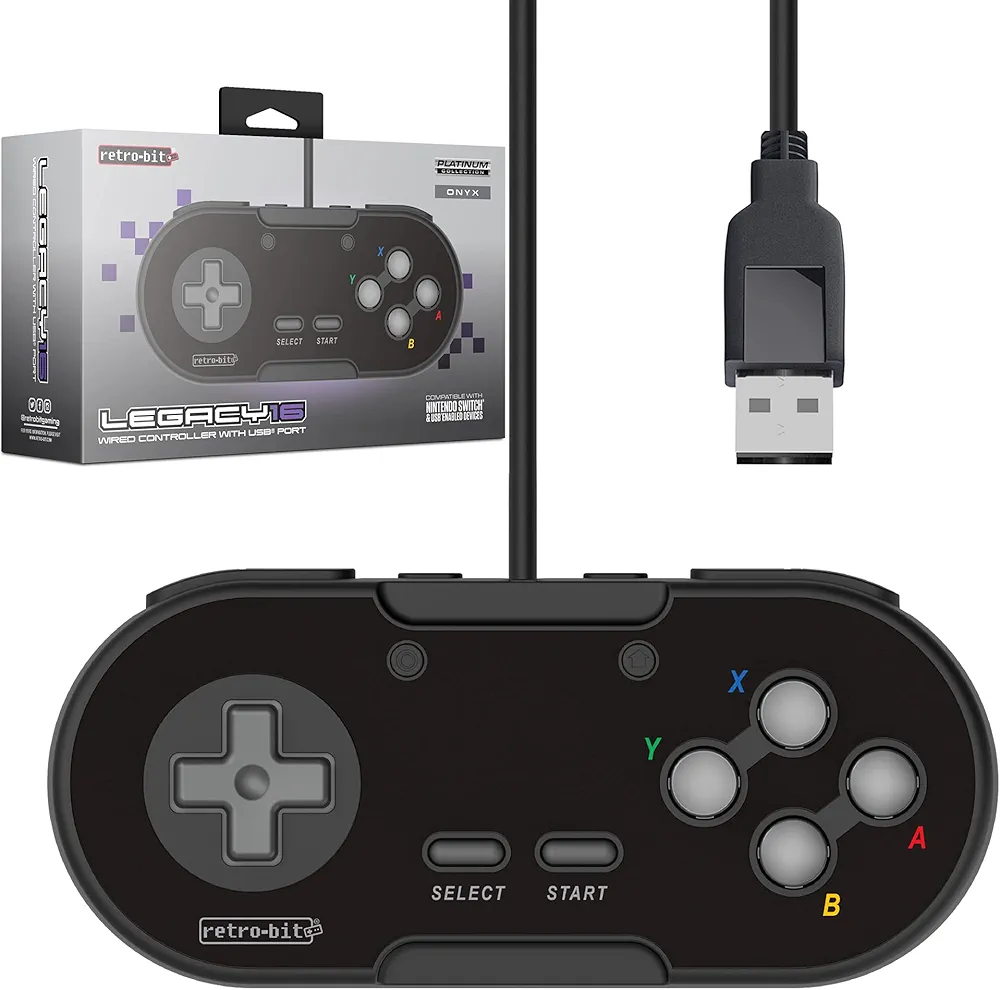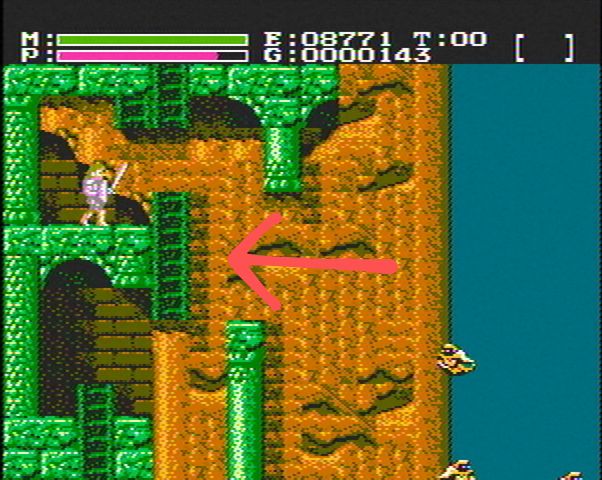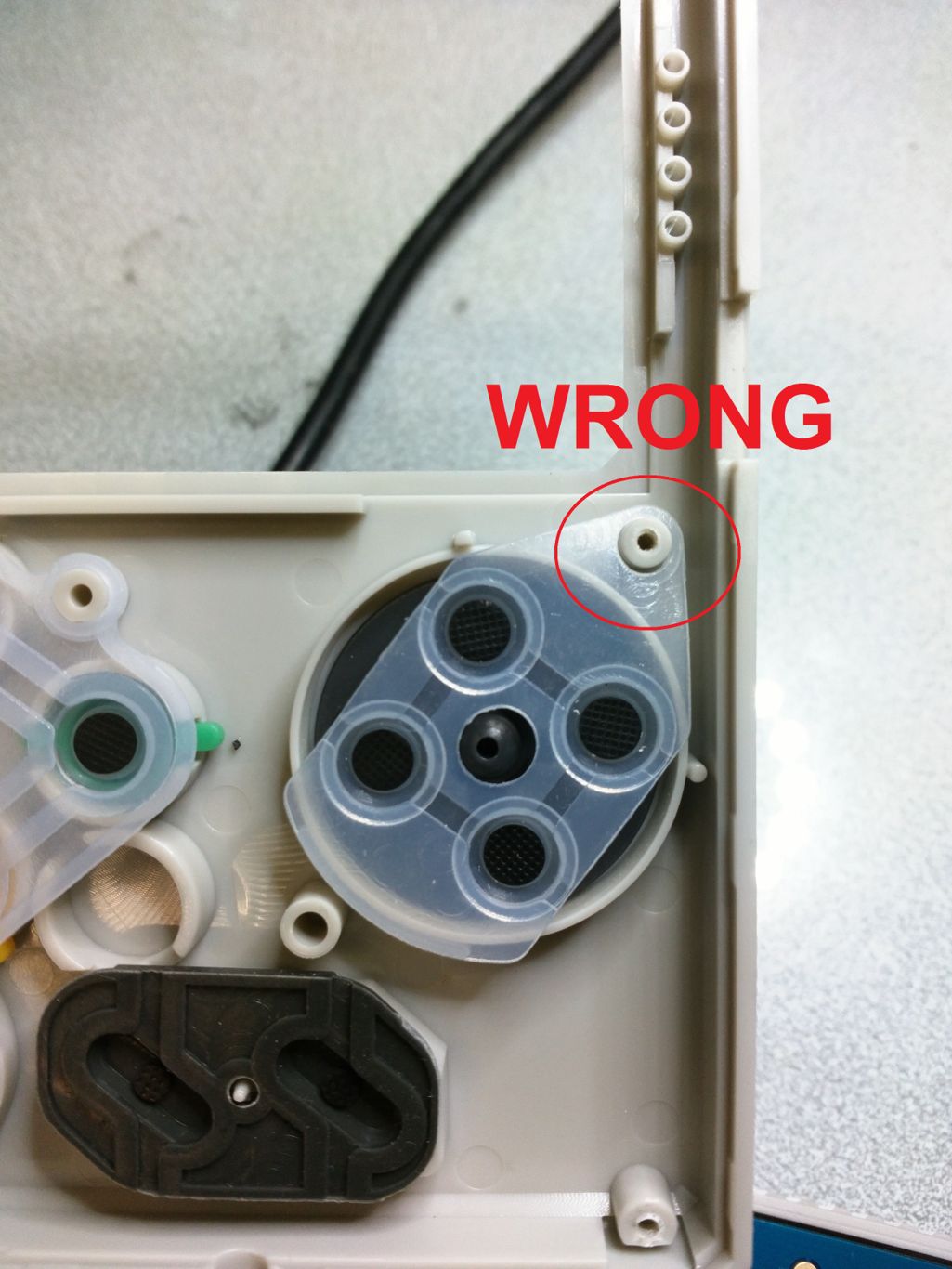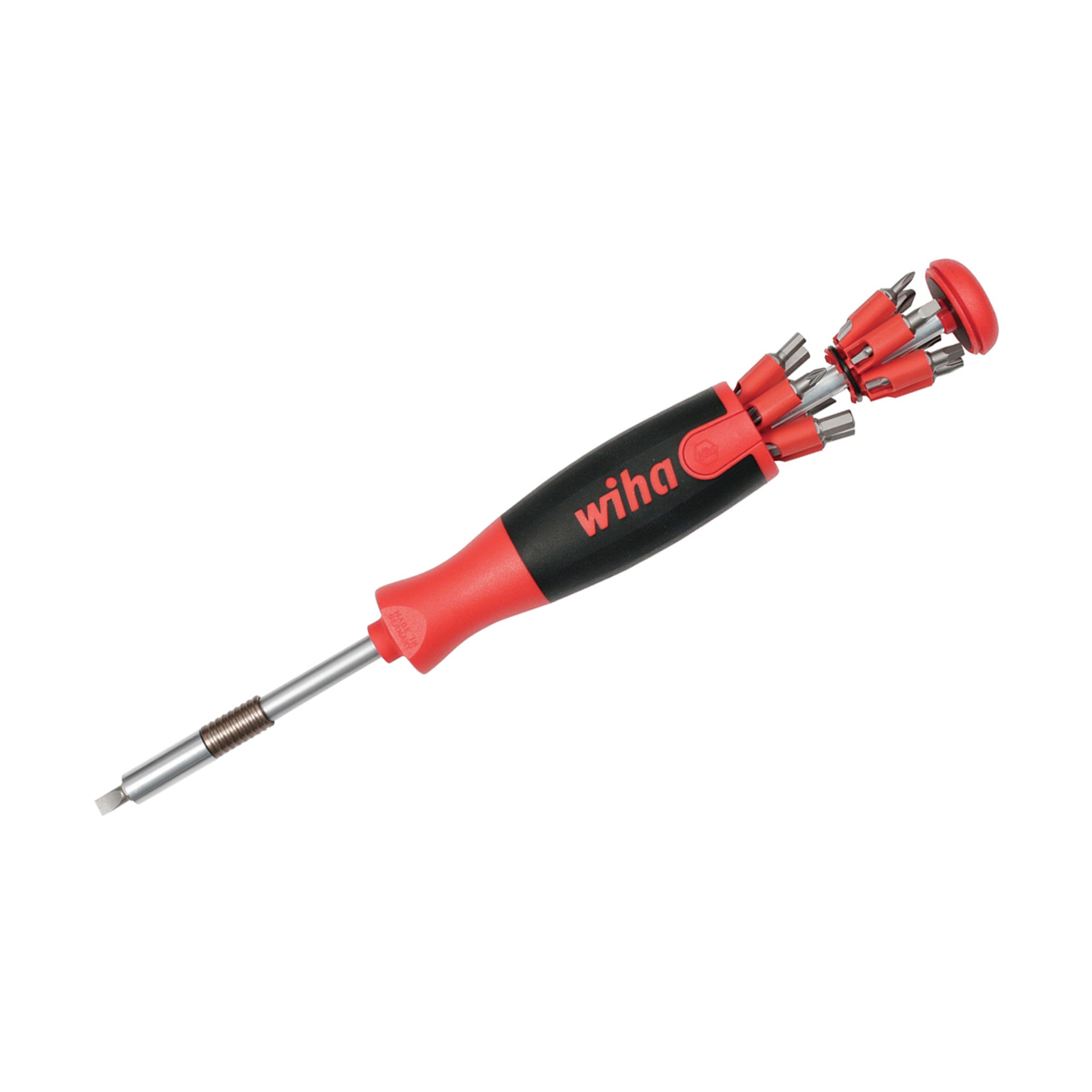My main gamepad is a Retrobit Legacy 16, a perfectly cromulent USB pad that in my dusty memory banks feels exactly like a SNES controller, but it's been awhile since I've used one so I'm sure there are more differences than I realize.
One such difference is that the D-Pad is a little bit too sensitive: when you're holding left or right, it's far too easy to accidentally press up or down (and vice versa.) This wasn't too bad at first, but it's gotten worse over time, coincidentally after it's been dropped on the floor more than a couple times. There may be some connection here. (in my defense, it's easy to do when the cord weighs more than the controller.)
I was still able to play games like Mario with little ill effect other than occasionally accidentally going through a door or pipe I didn't intend to, but I was playing Faxanadu the other day and I found it nearly impossible to climb the ladder outside Forepaw without falling off to the right. It took all my concentration to press up in the exact middle of the D-Pad to climb straight up.
Thanks to kouban for the screenshot.
So I googled around a bit, as much as is possible in the blasted hellscape that is the web in 2025, and found a forum thread called D-Pad sensitivity issue. It's for a different product, a gameboy-style handheld (in hindsight, I'm not even sure it's a retrobit product: the forum tagline is "easy electronics")
The poster recommended flipping the D-Pad membrane so that the hole was attached to the opposite post. I didn't know if my gamepad's D-Pad was adjustable in a similar way, but I figured it was worth opening the controller to see.
Now, I've watched a million youtube videos where people open up electronics and game peripherals (old and new) to examine, mod and repair them. I figured I was comfortable enough with the concept for a simple diagnosis. If the D-Pad wasn't adjustable, I'd simply put it back together. Well, it turns out no amount of watching prepares me for doing.
My favorite tech documentarians, like Cathode Ray Dude and James Channel will leave their mistakes and failures in their videos, which I really respect. They could easily edit the videos to make themselves look like expert geniuses who get everything right the first try. They present an authentic version of their skill and success rate, and it helps the hobby feel more approachable. I'd love to be someone who can understand and fix old and broken electronics, breathe new life into stuff that would otherwise be e-waste.
But it feels like my mistakes and failures are much more basic than the ones they experience, and it makes me feel pretty hopeless when I can't even properly disassemble and re-assemble a simple SNES pad. It had five phillips-head screws holding the back on, and I used the right size screwdriver, but one of the screws wouldn't loosen. I have difficulty telling by feel if I've got a good grip on the screw drive, so I don't know if it's stripped or if the screw hole just wasn't formed properly. But with enough wiggling I managed to get the back off with the screw still in place.
I pulled the main circuit board out and found that the D-Pad membrane did in fact have a second binding post. It didn't look quite like the picture, both posts were the same size, but I figured I'd rotate the membrane and see if it made any difference.
Putting it back together wasn't the simple reversal of steps I anticipated. The shoulder buttons and the tiny circuit boards holding their contacts aren't attached to the main board in any meaningful way: with the main board removed, the tiny ones were dangling on their wires, held on by nothing but their solder joints. The front half of the shell has tiny plastic slots for the boards and tiny plastic pegs to seat the shoulder button hinges, but getting everything to stay in place while I attempted to re-assemble the shell required more patience and concentration than Forepaw's ladders. The smallest bump or shake would send the buttons flying out of their crappy little seats. I almost took a pair of wire cutters to the shoulder buttons and said "fuck it, it's just an NES controller now."
But I persisted, and managed to finagle the back cover on. But the problems continued. The wires connecting the shoulder buttons and USB cord to the main board were just sort of smooshed between the circuit board and back cover, and if they weren't smooshed in just the right way, they'd foul the slots that the pegs on the back cover are supposed to fit into. So with several furtive glances at my wire cutters, I'd adjust the wires, try to get the cover on, re-seat the shoulder buttons, adjust the wires, try to get the cover on, re-seat the shoulder buttons, etc. etc...
I did finally get the cover back on and the screws in, but it's not the same controller. There's a visible gap between the two halves where I just couldn't quite sandwich the pieces together properly. I didn't feel like I could tighten the screws all the way, and it feels substantially less solid than it did when it was factory-new.
But, it did fix the problem. The directions on the D-Pad are much more discrete, and I can press a direction without any errant perpendicularity. It... kind of feels bad in a different way, like it requires too much force and my thumb will hurt if I play too long, but that's more accurate to how I remember the Nintendo D-Pads.1 I don't know how long my kludge will hold together, but I declare the job a dubious success.
What lessons have I learned from my struggle? Mostly that I'm not equipped for this kind of work. All the hardware nerds I watch have a dedicated work space. My bread and butter is software, so my desk is fully occupied by computer and keyboard and monitor at all times. I didn't think it would matter for such a "quick and easy" job, but having a big flat surface where I could set the controller down and arrange the cord so that its weight wasn't constantly trying to pull the rest of it down, I think, would've helped a lot.
I think I should also get a dedicated set of small screwdrivers for working on small electronics. My screwdriver is pretty nice: it's a big Wiha multi-head driver with 12 reversible bits stored in the handle,2 so there's a good chance I'll have the kind of screwdriver I need for most occasions.
But for small screws, it's hard to get down into the recess and it's hard to tell by feel how well it's gripping. A set of small dedicated drivers may help.
But more than anything, I think my fumbling comes down to lack of confidence and need for practice. I want to get my hands on more broken electronics and try to fix them, and to do that I need a more flexible work space, and that's just not a situation I can change right now. I don't have room for a separate work table, and I can't afford to replace or modify my current desk to accommodate physical work. I'd need a swivel mount for my monitor so I can move it out of the way when I need space, and some sort of storage compartment for my keyboard. Then there are a lot of little things it'd be nice to have in a proper work space, like better lighting, clamps to hold things in place, a magnifying lens, and magnetic screw storage. And of course, if I ever want to get into proper electronics repair I'd need a multimeter, soldering iron, desoldering tools, an oscilloscope...
This is one of those "expensive to be poor" situations where I can't afford the up-front costs of what I need to repair things, despite an interest in learning and desire to learn how to do so; and so I have to buy cheap crap, and when (not if) it breaks, replace it over and over forever. The boots theory of socioeconomic unfairness strikes again.
-
Games that require constant fluctuating motion in both axes were hell on my left thumb even as a kid, even on the original controllers, and I'd always be in pain after a particularly intense round of Ice Hockey or Back to the Future. But most games I play aren't like that, so I should be fine. ↩
-
Needless to say, I acquired this in the before times, when desperate precarity wasn't a given and I could occasionally splurge on higher-quality gear. I got sick of never having the right screwdriver for the job, and wanted one I could invest in for life. It was around $30 at the time, and it's usually the right screwdriver for the job, it's just not always the best screwdriver for the job. ↩




kouban shares excellent screenshots. Too bad I cannot see livejournal at work. Ahh well.
I have some experience opening up controllers and handhelds to fix when something is seated wrong or worn out, I can give you tips. I am coming at this from a lego gremlin's point of view though.
For a work space, one can get a box, short enough that it doesn't hurt your reach, and at least 2x as big as the electronics you're taking apart (so you can set the 2 halves of it down), with no holes in the corners, or if there are holes a seperate way of holding screws is necessary. Like a cup. Or a piece of paper, with a picture of the electronics, with the screws stuck into the paper. That's more useful if there's multiple kinds of screws. NDS has screws of different lengths, for instance.
Then set the box on floor or bed. Bed is easier on the back, but you already have sleep issues, it might be bad hygiene to work there. Picnic table in the sunlight is also ideal if the temperature is right and the weather is dry, but I suggest several paperweights, for sure.
When I open up electronics, the first thing I do is take a picture of it with my phone, from a few angles. Because I carry around a camera all the time might as well use it to simulate photographic memory. If you don't have that option, draw out the tricky parts as they are. This... is something that comes with experience. For instance, now you know to take note of the shoulder wire dealies.
But you had to jiggle it open, that information might have been scattered before you had the chance to look at it. Which would definitely make putting things back together rough; you're new at it and you got an extra handicap. If you're willing to sacrifice a problem screw, next time, wedge it open without wiggling if you can. Good wedges include: an old knife that is already kinda dull, a flat piece of hard plastic that was from another broken thing but I kept it because I'm a gremlin (also great for scraping crud off pans!), a nail, a big flathead screwdriver (though this off-standard use shortens the screwdriver's life. Never ever put a hammer to a screwdriver!)
You don't need to put that problem screw back in. 4 is a safe number of screws. If you do have missing or stripped screws, try to alternate which screws you don't put back on the outermost circle: OXOXO is better than OXXOO. If there are screws holding multiple things in place (remembers DS), they get priority. You need at least 3 points to keep a 3d item stable, at least 3 screws, 1 screw and a zip tie, or 2 zip ties.
If you feel you can squeeze close your controller until it's all flush without anything breaking, a humble zip tie can keep it closed for you. It might help with the pressure as well. Since the shoulders are already nixed, the left side of the controller looks like it has a spot that could work, just right of the d-pad. If you need to loosen a zip tie, they can be opened with a wire to push the little tab back, a bit like picking a lock with a single tumbler, and also that tumbler is halfway visible. Note that doing this weakens the zip tie, so it is no longer safe to hold as much weight as it is originally rated for.
Other jury rigs I have done include folding up cardboard to replace a cracked spacer, and using generic adhesive bandage stickers to repair membranes.
What tools can you scavenge for your projects? You already have wire cutters and a multi screwdriver. A bit of spare cardboard, tape, and scissors to shape those are good. Tweezers can be helpful when your hands aren't tiny enough (I imagine a racoon that types on standard sized keyboards has comparatively large paws, clever though your hands may be). Files are helpful too. I keep getting nail kits for xmas, so I have spares. There's the old knife I mentioned earlier. The plastic from a bottle of detergent is soft enough to cut into many shapes, and hard enough that some of them shapes are useful tools. For a plastic wedge, I suggest you file off all the rough bits. Eyeglass repair kits are also cheap, and come with screwdrivers that are way too small for most electronics, but hey if know you're looking for something near the 1.5 mm or 1/8 inch range that's the cheapest way to get a tiny unhardened screwdriver. Zip ties are very convenient to have. They're less drastic than epoxy. Small screwdrivers are good to have. Since you already have the multi head driver, you might take it to a big box hardware store, and ask if they have a set of longer skinny heads, to make sure they fit your existing screwdriver, and take notes how that connection is described, in order to shop around. You might get lucky.
(shoot I kinda want to find you and give you some of my spare tools.)
This is maybe the best comment I've ever received, haha. Tons of good advice here. Sitting cross-legged on the floor is better for my back than the bed anyway. I do have a big shoe box I can use for this purpose. I'll try that next time. I have seen people take photos of their electronics during the teardown (Techmoan taught me about printing out a photo of the device and taping the screws to it, which I thought was brilliant. I just didn't think this would be a complicated enough job to need it.)
We do have zip ties, but I actually was able to keep the shoulder buttons intact and functional, so I'll hopefully be okay. Like everything works, it just feels slightly off. It might be partly or fully just in my head.
The problem screw is actually stuck in the back of the case (which in hindsight means it's definitely a malformed hole and not a stripped head.) I tried to push it through from the other side with a bent paperclip but it didn't budge. Hopefully it's cool just hanging out.
Thanks for all the insight. I'll keep your other advice in mind if I try anything like this in the future
Ah I'm glad you got to keep the shoulder buttons. I wonder does everything feel off or just the d-pad?
The D-Pad is probably a case of "different, not necessarily worse". Probably just need to get used to it.
The shoulder buttons are fine. The face buttons feel like they almost have a "sunken" quality, like they're further down beneath the face and I have to press ever-so-slightly harder to activate them. Hopefully I'll get used to that too
It could be true that it's a little sunken. If you want to open it again, you could put something springy between the circuit board and the back piece of plastic. Like... a spring. Or foam, or a sponge. But if you're doing fine, maybe save that for the next time you have to open it up for another reason.